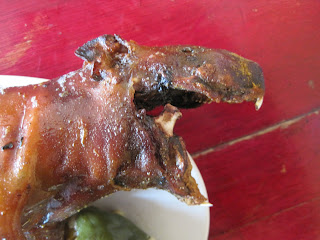The above is by way saying that I was motivated to accept an invitation from Rebekka, the vegan among our group, to have lunch at Govinda Lila's, a vegetarian restaurant in Cusco. It's just a tiny place, with three 6-seater tables, a kitchen the size of a small bathroom, and, as far as I can tell, no bathroom. There's no menu, just the menú, that is, the set lunch consisting of soup, a main dish, and tea. I think you can choose to have just the soup or just the main. It's kind of a fusion of Peruvian and Indian food.

When we got there we met Laura, a Colombian friend of Rebekka's. Shortly thereafter an American couple, Chris and Hailey, joined us, and it came out that Laura and Hailey had done an ayahuasca healing ceremony the night before. Ayahuasca is a combination of plant materials which are psychoactive when taken together, but have no effect otherwise. So, some heavy drugs, man. Laura described the effects as hallucinations about things in your life that are causing you to be 'blocked', thereby helping you get through them. (I'm just reporting what I was told.) You sweat a lot and are tired afterward. The concoction is administered under the supervision of a shaman and three assistants.
Ok, on to the food. I'm not sure what the soup was but it tasted like it was full of veggie goodness. The main consisted of kidney beans, lightly-curried rice, and some kind of potato patty. So, in a way, it followed the Peruvian pattern of two starches plus some kind of protein. I was happy with it since I hadn't eaten any legumes in a while. You get all this for four soles, or about $1.40.
Just as we were finishing one of the typical Cusco downpours started--it had been sunny up until then. The restauarant was just about full so we weren't sure whether to stay and wait out the rain (which could take some time in Cusco) or leave so as to free up the table for more customers. After a while we got up to go but Lila, the proprietor, told us to stay because it was raining too hard. Eventually it tapered down to a drizzle and we left.
A couple of days later Rebekka and I went there again (I think she goes most days) and found the same crew as before. This time we were served pumpkin soup, with the main consisting of stir-fried veggies, some kind of grain that looked like a cross between rice and bulgur, and tarwi. Tarwi is the seed of a species of lupin. It's quite high in protein. When prepared it looks something like hummus but is fairly mild tasting.




















